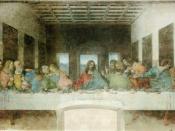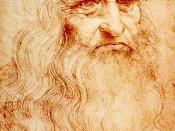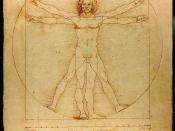The Middle Ages, the Early Renaissance, and the High Renaissance are only three ages individually but as a whole helped shape our modern philosophies and ideas of art and influenced generations of artists among them, Leonardo Da Vinci, Giovanni Bellini, and Giotto. Among there many works of art there stand out to me these three. Vitruvian Man 1492(Leonardo Da Vinci), Feast of the Gods (Giovanni Bellini), and Christus Rex (Giotto).
The Late Gothic is the bridge between the Middle Age and the Renaissance. The Crusades and trade that followed from them brought an influx of Byzantine art and artists to western Europeans. This influence appears strongly in the emotionalism of a large wooden crucifixes and icons. Although they are still Byzantine in style, they were becoming more 'Western' in treatment. Through these connections many literary works of classical antiquity were brought to the West. The new age began in the 14th century, where lawyers and notaries imitated ancient Latin style and studied Roman archaeology.
The novel unification of the characteristic style in art in Europe also took place at the end of the fourteenth century. The new hegemony was the consequence of a multifarious exchange of various artistic ideas and had lasted for several decades. It is difficult to point out the place and the time where the style came into being. That style was named the International Gothic.
The most significant artists of the period are Cimabue and Giotto. Giotto was trained in the Byzantine tradition. The art characterize rediscovery of the third dimension, of real and measurable space and architectural vocabulary based on the study of Classical structures.
Giotto has become the symbol of a profound renewal in the history of Western figurative arts, and of the first radical renewal since ancient Greece.
"He converted...


